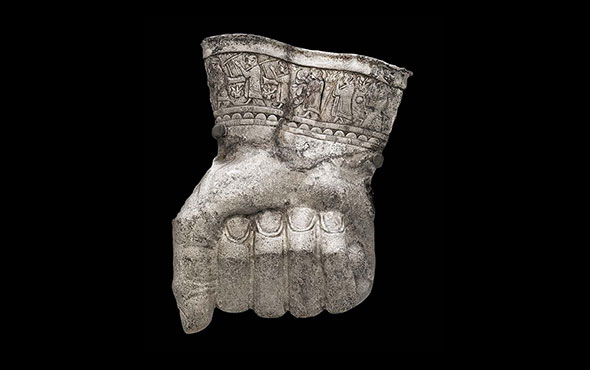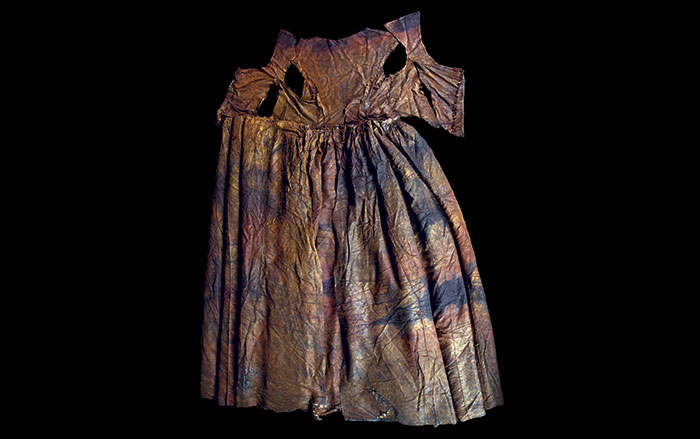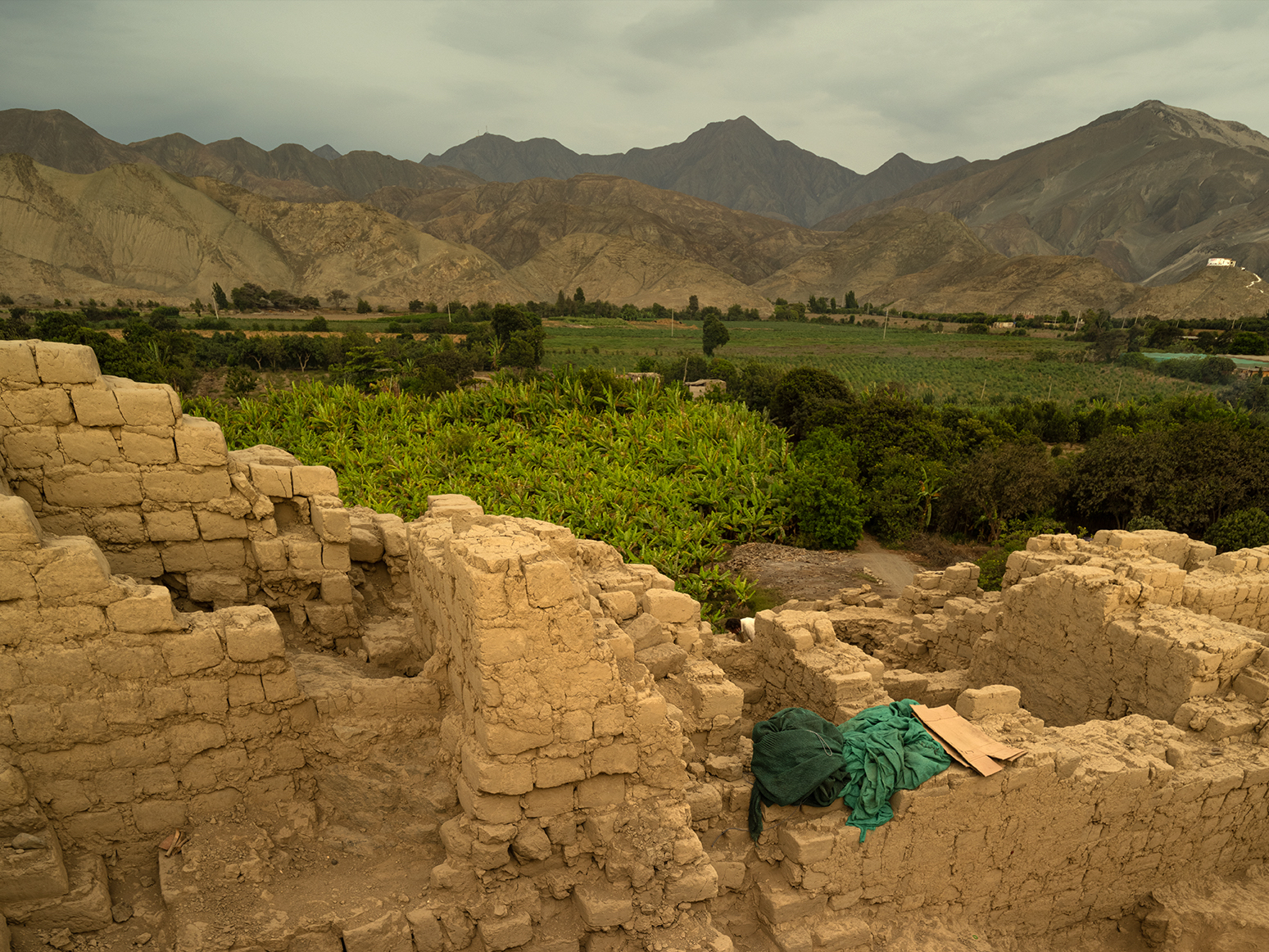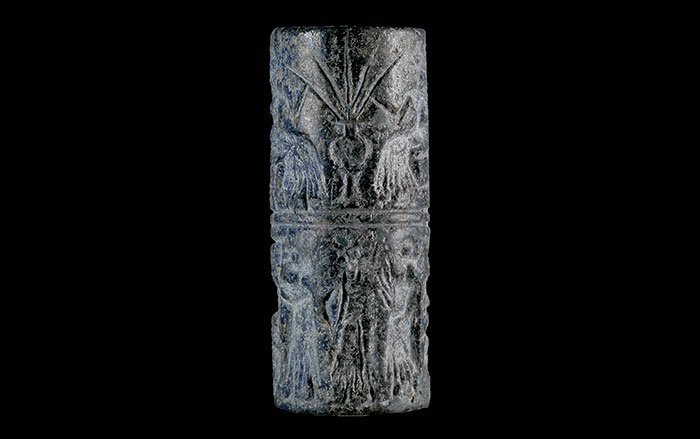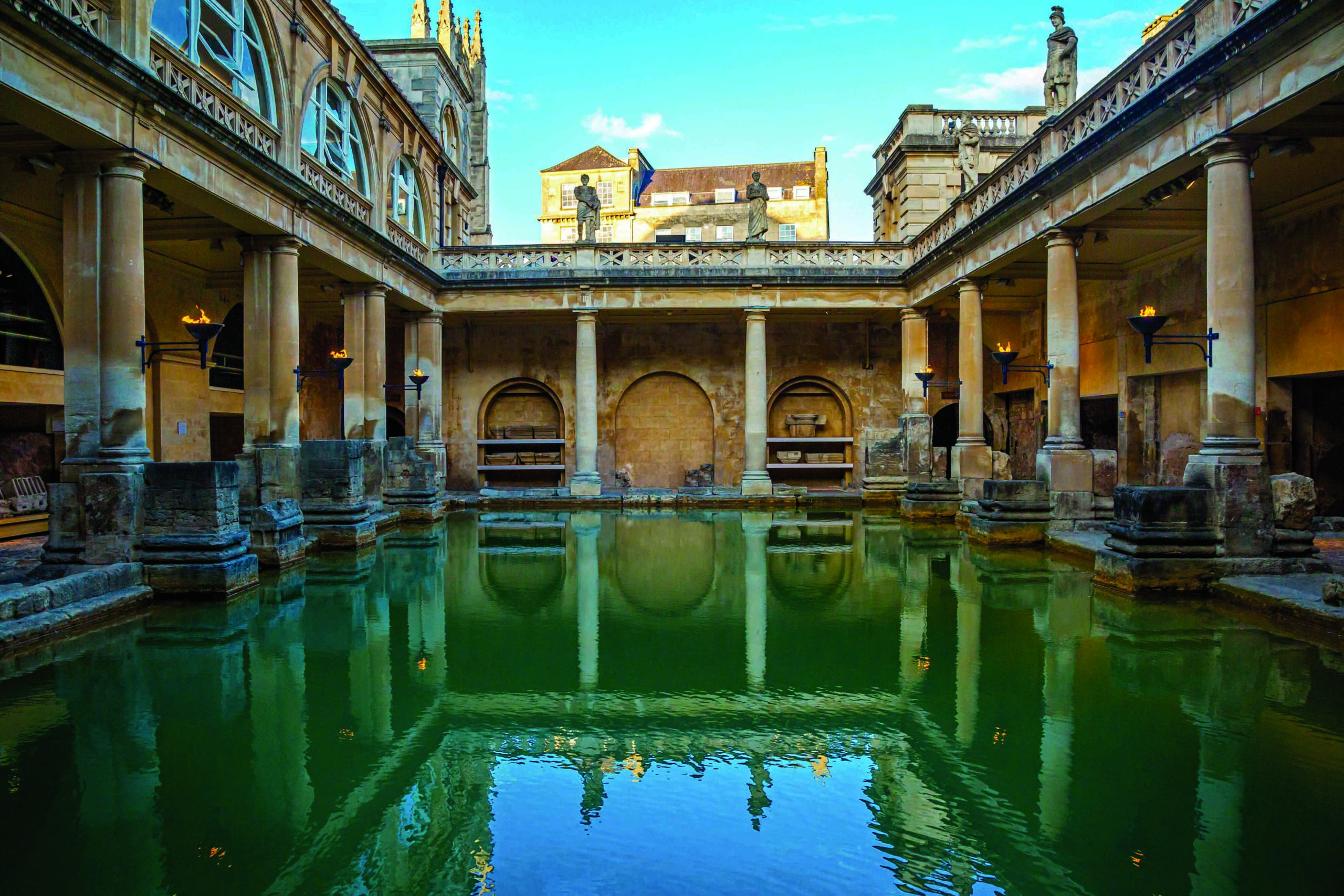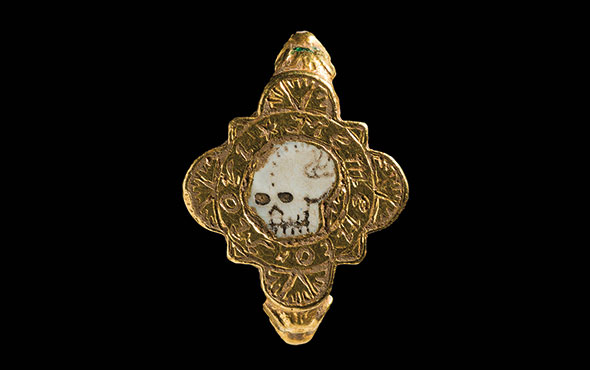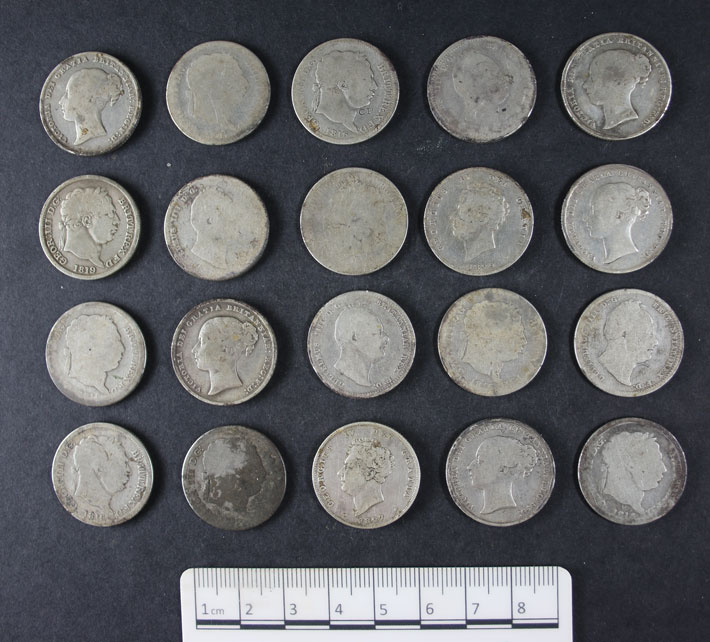
PORT ARTHUR, TASMANIA—ABC News Australia reports that a cache of silver shillings totaling an overseer’s weekly wages was discovered in the clay floor at the site of the foundry at Port Arthur, a penal colony founded in 1830. Convicts sent to Port Arthur built ships, made shoes, worked as blacksmiths, processed timber, and made bricks. By the early 1840s, more than 1,200 men labored at the site. The coins were found in an area of the foundry where copper casting took place, according to Richard Tuffin of the University of New England. Since the prisoners were not allowed to possess money, he thinks the coins, which date from 1814 to 1844, may have been stolen from an overseer and hidden in the workshop, but never recovered. “It could have been because they were suspected and their access to the workshop was denied, or because they were sent to Hobart to be released,” Tuffin said. Metalworking waste in the foundry revealed where the men stood as they worked, he added, and the researchers even uncovered the shop’s anvil. To read about excavations at Pentridge Prison outside Melbourne, go to "Alone, but Closely Watched."


